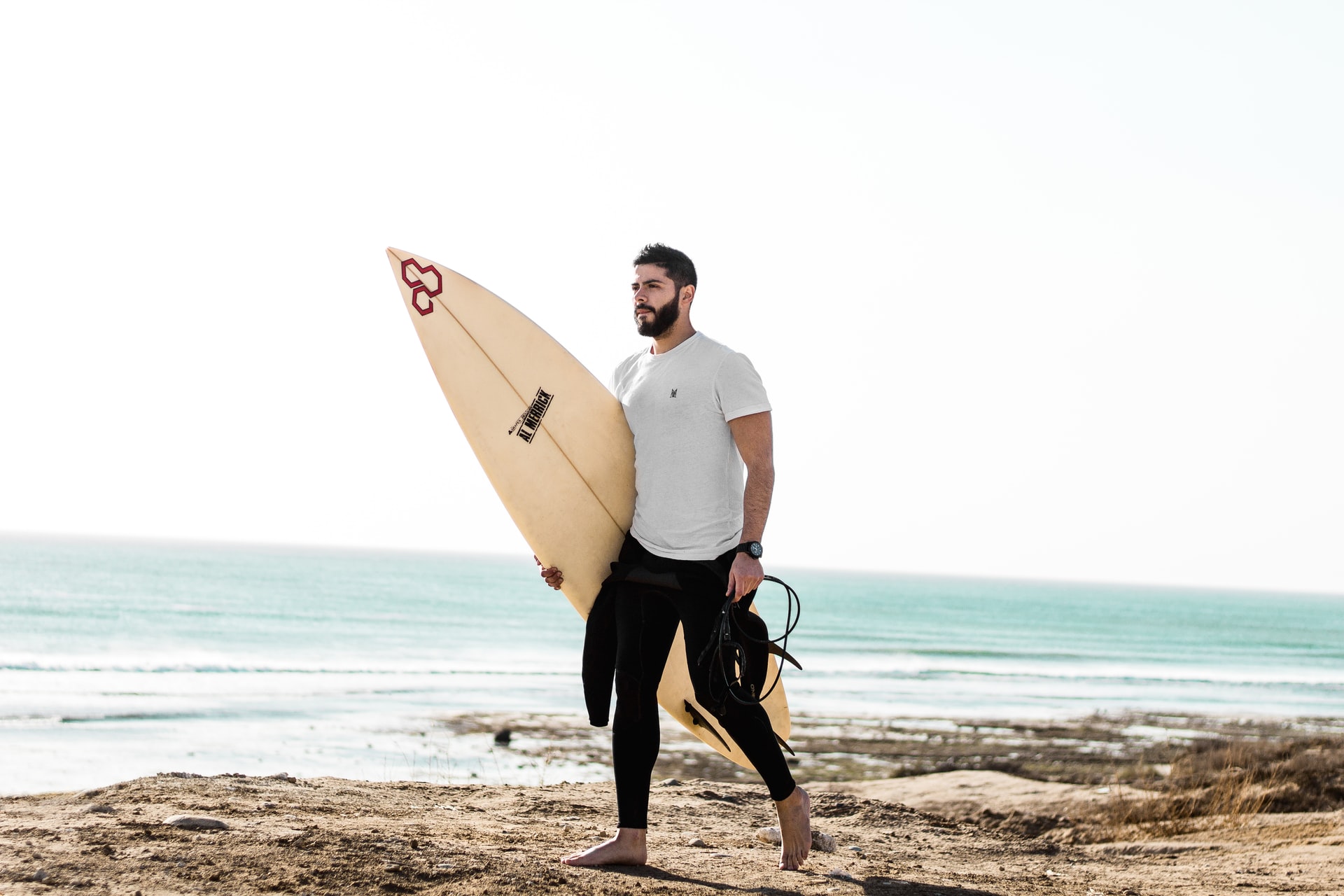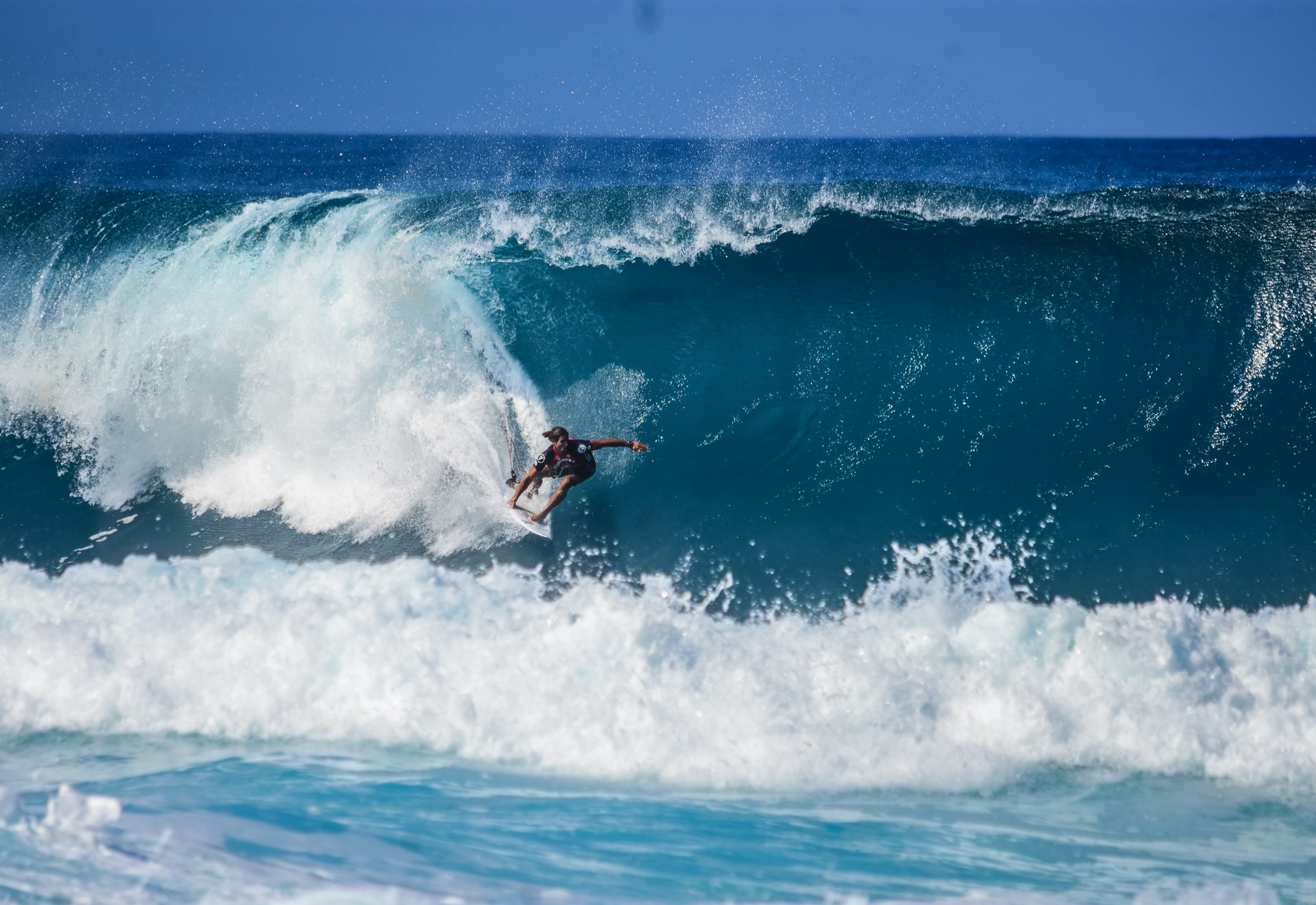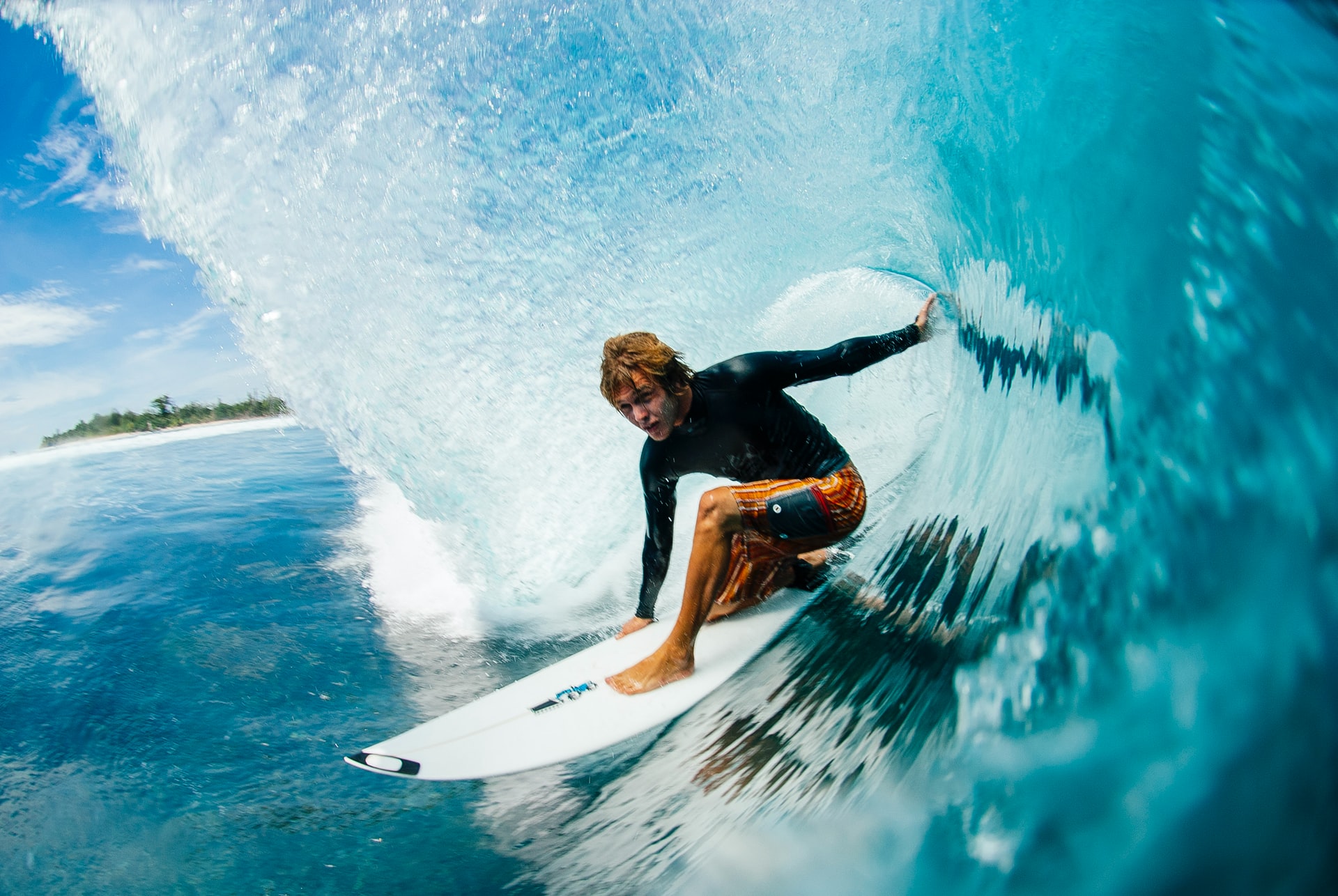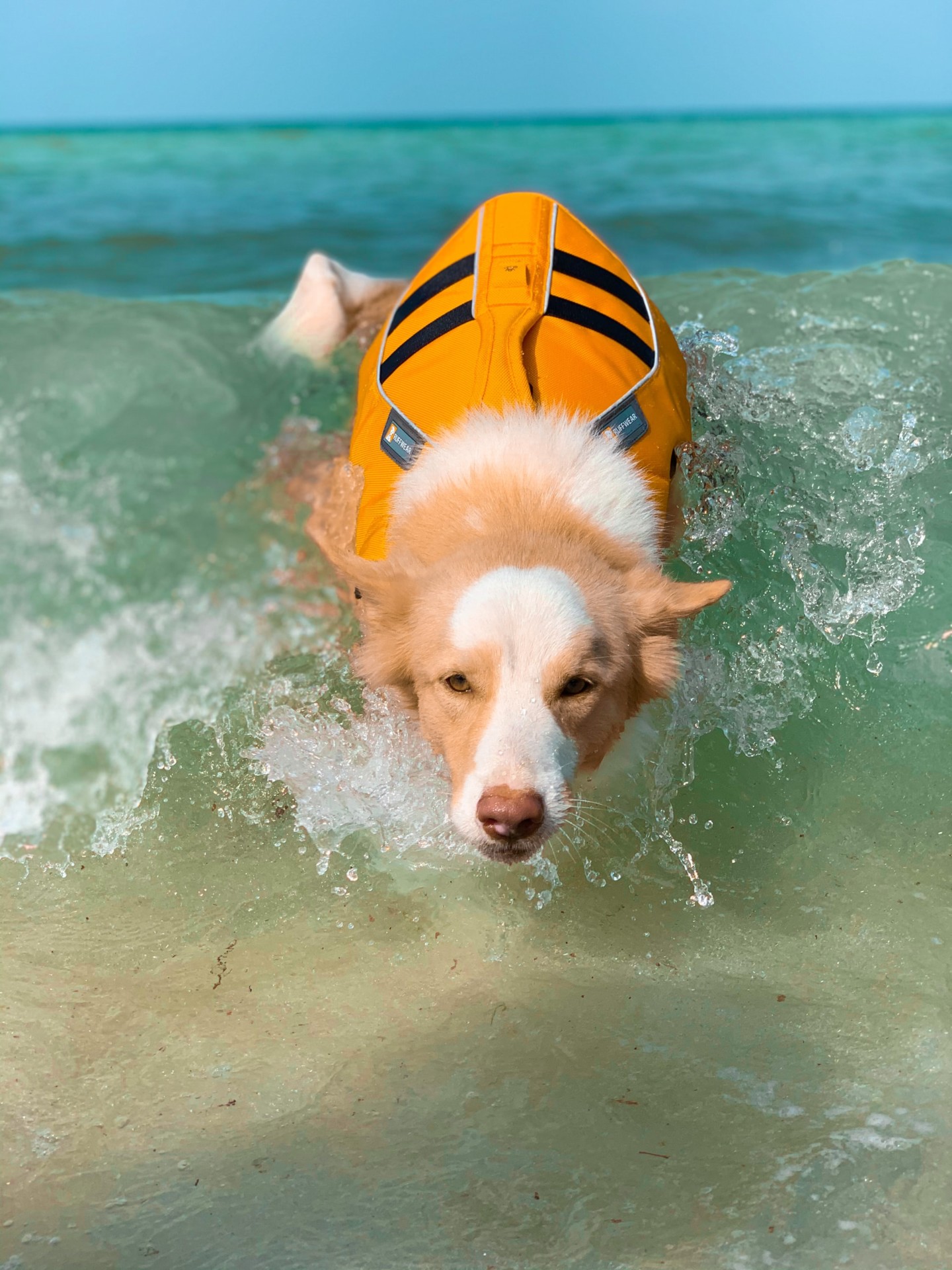It may seem strange to think about surfers wearing shoes.
After all, who enters the ocean with shoes on?
Strangely enough, there are special shoes designed for surfing, although these “surf shoes” are not like your common running sneakers.
Surf shoes (commonly known as booties) are usually made from the same material as your wetsuit and are used more for warmth than protection, although in some cases wearing specialized surfing shoes will work for protection against sharp stones, coral, and shells when entering the water.
Let’s take a deeper look into:
- what surf shoes are
- why they are worn
- how they may benefit you, and
- which surf shoes may be best for your needs.
- Do Surfers Wear Shoes When Surfing?
- 5 Advantages of Wearing Shoes When Surfing
- 4 Downsides of Wearing Shoes When Surfing
- How to Decide Whether to Wear Shoes
- Which Types of Shoes Are Best Suited for Surfing?
- Which Shoes Should I Avoid?
- Conclusion
- You Might Also Like…
Disclosure: this post contains affiliate links (clearly marked with ), which means we may earn a commission if you buy something through them, at no additional cost to you.
Do Surfers Wear Shoes When Surfing?
As mentioned above, although not very common, surfers do wear shoes.
These shoes are best described as wetsuit socks as they do not tie up, and often do not have hard soles.
Some of the reasons that a surfer may choose to wear shoes in water include:
Warmth
In cold water, surfers wear a wetsuit to maintain their body heat.
When the temperature of the ocean continues to get colder, the exposed areas of your skin (head, hands, and feet) can make your surf session unbearably uncomfortable.
By using booties to keep your feet warm, you will be able to surf in colder water, as well as stay in the water for longer.
Protection
We all know that surfing comes with many risks, which is one of the reasons it is recommended to wear a wetsuit.
This protection can also be extended to the feet with the use of surfing shoes.
Often, especially when surfing over a reef or on a rocky point break, your feet could become shredded before you have the opportunity to lie on your board and paddle out to the back of the breaking waves.
Wearing booties when you need to cover an area of sharp coastline, or when surfing a dry reef (where it is likely you will end up standing on the reef at some stage) is a good idea.
Extra Grip
The least common, but often used purpose of surfing shoes is for extra grip.
If you are running low on surf wax then your well-griped surf shoes will allow you to enjoy the waves of the day.
Although they will aid in your grip, it is still recommended to use surf wax, even when you are making use of surf shoes.
5 Advantages of Wearing Shoes When Surfing
There are several advantages to wearing booties, all of which correlate with the above reasons why surfers may choose to wear them.
Below we will look deeper into each of these advantages.
1. Surf in Colder Water
If you have ever attempted to surf in water colder than your wetsuit is designed for, you will understand how uncomfortable it is to be freezing cold while in the water.
As we get cold, our bodies protect our vital organs by concentrating our blood flow to these areas (chest, stomach, and head).
This results in our hands and feet becoming colder than the rest of our bodies.
Trying to surf with frozen feet is a painful and extremely difficult task.
This is because they become sensitive to gentle knocks, and when numb, can be difficult to control and stand on.
Wearing surf shoes will keep your feet warm, and therefore make it possible to surf comfortably in colder waters.
2. Possibility to Surf for Longer
Heat gets dispersed 25 times faster in water than it does on land.
Because of this law in thermodynamics, we can quickly find ourselves becoming cold – even in warm water.
If you are the type of person that tends to get cold quickly, you may find that after as little as 30 minutes to an hour in 25°C (77°F) water, your feet are freezing, your body is shaking, and you are ready to leave the water and warm up in the sun.
Although this may sometimes not matter because of daily time constraints, on a day when you have all the time in the world, and the waves are perfect, it can be heartbreaking to need to leave the water because you feel cold.
Wearing booties will help prolong the amount of time you can spend in the water, even when the temperatures seem warm to others.
3. Easy Access to Awkward Breaks
Finding a perfect break, but realizing that you need to walk over a large amount of sharp rocky shoreline to access it, can put a damper on the experience.
This will either result in a long, slow, and risky journey across the treacherous terrain, or a long and difficult paddle around the break.
One example of this is when surfing a point break.
Because point breaks tend to form extremely long waves that wrap around rocky headlands, the only logical answer to entering the water is by crossing the rocks at the point.
Wearing surf shoes will make this journey much safer and quicker, therefore providing you with more time to enjoy the surf and less time worrying about your feet.
4. Surf Safer on Shallow Breaks
Another time that the protection comes in handy is when surfing shallow breaks such as a dry reef.
Because these breaks are often in water less than waist high (often only a few feet), the likelihood that you will need to stand on the reef at some stage is high.
Although you should never stand on a reef, as this will destroy the coral below you, sometimes this is unavoidable.
Wearing booties will protect your feet from the sharp reef in the case that you have no choice but to put your feet down.
5. Protection From Sea Life
Although sea life is not considered one of the top dangers of surfing, it should always be considered.
When surfing in areas with a high risk of jellyfish, blue bottles, or sea lice, surfing shoes will help protect your feet from being stung.
Although it is not recommended to surf in water full of these creatures, if you have judged the risk factor and find it to be reasonably safe, then wearing shoes, gloves, and a hood is always a good idea.
4 Downsides of Wearing Shoes When Surfing
As for the downsides to surfing shoes, there are not many as you are likely to only wear them in very specific conditions.
However, there are a few setbacks that wearing booties can cause.
1. Overheating
When using surf shoes, specifically for protection, you may find yourself overheating.
This is very likely to be the case when surfing on a hot day and in warmer water.
Similar to wearing a wetsuit that is too thick, booties can cause you to feel uncomfortable, and in extreme cases lead to medical problems such as heat stroke.
If you feel that you are getting too warm but do not feel comfortable surfing without your shoes, a good trick is to let the warm water out of them and new fresh water in.
By doing this you will help regulate the temperature around your feet. This trick can also be used for wetsuits on hotter days.
2. Lose the Feeling of Your Board
Wearing shoes while surfing will reduce the feeling of your surfboard below your feet.
Although some people may see this as an advantage because the feeling of wax irritates their feet, most find that this creates a disconnection between them and their board, which can make standing on your surfboard more difficult.
This is especially true for those surfers who spend a lot of time barefoot, as they are not used to a layer between them and the ground.
3. Reduced Balance
We use our toes for a surprising amount of balance. If someone tries to push you over, you will notice how your toes instantly grip the ground.
Surf shoes are often tight around the toes which greatly decreases their dexterity.
Surfing with shoes on, because they limit the movement of your toes, can make balancing harder.
More advanced surfers may not notice this as much, and after some practice, it will become second nature.
But if you are new to surfing, do not be surprised if once you put on booties, balancing on your board seems slightly trickier.
4. Added Cost to a Cheap Sport
Surfing is a relatively cheap sport to take up due to the small amount of required equipment.
Although surfing shoes are not costly, they will add to your required budget, especially when they are a requirement for the conditions that you will be surfing in.
How to Decide Whether to Wear Shoes
Deciding whether you should wear shoes while surfing will be completely up to you in the end, but there are a few things you can consider before making your final decision.
Asking yourself the following questions will help:
How long can I stay in the water before my feet become too cold?
If your answer is shorter than the amount of time you wish to stay in the water, then considering wearing shoes is a good idea.
Am I worried about the threat of sea life?
If you are worried about sea life, but not worried enough to stay out of the water altogether, surfing shoes can give you some peace of mind.
How will I enter and exit the water?
If you are required to enter or exit the water over rocks or reef and you are worried about the safety of your feet, then wearing shoes may be a good idea.
What is the ocean floor made from and what is the likeliness of my feet touching it?
Considering what the ocean floor is should always be on your mind.
If you feel that the ocean floor poses a high risk of injury due to its consistency and shallow waters, then wearing surf shoes could be an option to protect yourself.
Which Types of Shoes Are Best Suited for Surfing?
When deciding what type of shoes to wear while surfing, it is important to always use booties that are designed for the sport.
There are multiple types of booties, some of which are made for diving, some for rock pooling, and others for surfing.
Choosing the incorrect type of shoe will make your surf session difficult and uncomfortable.
When choosing the correct booties, you should consider the following:
The Material
Surf shoes should be predominantly made from neoprene (the same material as wetsuits).
Neoprene is flexible and insulating. If your surf shoes are not flexible, they will make it difficult to ride a surfboard due to your restricted freedom of movement.
Furthermore, if your booties are not well insulated, they will not serve the purpose of keeping your feet warm.
The Soles
Surf shoes should always have harder (but not solid) rubber soles.
These soles should be rigid in some way to maintain grip when standing on your board.
Some booties, such as those designed for using fins while bodyboarding or diving, are made with smooth bottoms and no added soles.
Using booties like these for surfing will make standing on your board difficult and slippery.
How They Are Secured
Through the many designs of booties, some will be secured by a zip, some by straps, some by elastics, and others will simply slip on.
Choosing the best design for yourself is important.
For example, many people find that zips along the side of their surf shoes are uncomfortable when their wetsuits push against them.
On the other hand, booties that simply slip on may be pulled off when wiping out on larger waves.
Ankle Support
There are two main designs when it comes to ankle support.
In one design, such as the Flash Bomb Split Toe booties by Rip Curl, the shoe will continue up your ankle.
This style creates more support and is better suited for cold water as they create a better seal.
Alternatively, low-cut booties such as the FK Surf Reef Boot will not cover the ankle.
This will leave your ankle slightly exposed to the water, and therefore is best when your purpose of surf shoes is only for protection from rocks and reefs.
One advantage that can come from low-cut booties is that your ankles will feel freer, and therefore make moving your feet around your surfboard easier.
Thickness
Lastly, you should consider how thick your booties material is.
When surfing in warmer water, using a 5mm thick surfing shoe is unnecessary and will make your surf uncomfortable.
Similarly, when surfing in a cold ocean, using 2mm booties will not provide the ideal insulation, and therefore not serve its full purpose.
Which Shoes Should I Avoid?
As mentioned above, it is important to use a shoe that was designed specifically for surfing.
Attempting to surf in shoes made for the land will lead them to become water-logged and heavy.
This is dangerous as they will drag you down while in the water.
Furthermore, land shoes often lose their traction when wet.
You should also avoid using booties that lack rubber soles, or those that are the incorrect thickness.
Conclusion
Most surfers do not wear shoes while surfing, although it is not uncommon to do so, especially in cold water or when surfing over rocky breaks.
Booties can keep you safe both from injury and the cold.
At the end of the day, it is up to you whether to wear them or not – but always keep in mind that you should do what suits your needs the most, and not the needs or opinions of others.
You Might Also Like…
-

Do Surfers Ride Switchfoot? 5 Benefits (& Why You Should Learn It)
-

Do Surfers Shave Their Legs? 5 Common Reasons (+Pros & Cons)
-

Do Surfers Wear Helmets? 8 Situations You Should Wear One (+4 Cons)
-

Do Surfers Poop in the Ocean? Myths & Facts (+5 Tips)
-

Do Surfers Run Into Each Other? 5 Common Reasons (+8 Tips)
-

Do Surfers Have Beards? Pros & Cons You Should Know (+4 Tips)
-

Do Surfers Like Constructive or Destructive Waves? (+Pros & Cons)
-

How to Surf Safely: 34 Crucial Tips (Every Surfer Should Know)
-

Do Pro Surfers Use Leashes? (+6 Reasons Why You Should Too)
-

Do Many Surfers Drown? Here Are the Facts (+4 Common Reasons)
-

Do Surfers Wear Life Jackets? (7 Reasons Why They Don’t)
-

Do Surfers Like Rip Currents? (& How to Use Them Safely)








